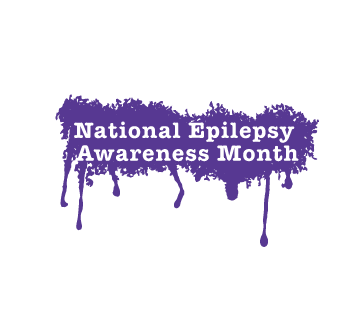The term “epilepsy” derives from the Greek word meaning “to hold or seize.” Terminology and descriptions relating to seizures were first discovered in historic literature dating back to 2500 BC. Deciphered text corroborated a wide belief of the time period – that epilepsy was deemed a manifestation of evil spirits, demon possession, or some supernatural occurrence. For this reason, epilepsy carried a stigma for many centuries.
Today, 65 million people around the world have epilepsy and approximately 1 in 26 people in the U.S. will develop epilepsy at some point in their lifetime. Epilepsy is diagnosed after a person experiences two or more seizures that are not derived from another medical condition. These seizures are driven by disturbances in the brain’s electrical activity that may be provoked by brain injury, genetics, immune reactions, infections, or metabolic causes. Most often, however, the exact cause is unknown.
November is National Epilepsy Awareness Month. It is important to highlight how people live with epilepsy, a condition that can complicate everyday tasks such as cooking, driving, attending school, and even sleeping. The onset of a seizure can occur unexpectedly, in any location and during any activity. During a grand mal (generalized tonic-clonic) seizure, sudden falling can put a person at risk for head injury and tongue biting. On the other hand, a petit mal (absence) seizure can cause a person to blank out or stare into space for several seconds, even during a conversation. These most commonly affect children and can go undiagnosed, often with the child facing repercussions at school for daydreaming.
Adults may have a difficult time finding employment, face workplace discrimination, lose driving privileges, or feel a lack of independence. Children may be bullied or excluded from participating in sports. People with epilepsy live with these physical and emotional burdens on a daily basis and must take extra precautions compared to their peers. Raising awareness of these lifestyle differences can help foster more inclusive learning and working communities for people with epilepsy.
On the upside, advances in EEG, antiepileptic drugs, neuroimaging, and neurosurgery have radically improved the medical approach to diagnosing and treating epilepsy. Lastly, learning the basics of “Seizure First Aid” can enable bystanders to help in the event of a seizure. Follow these 3 steps, as outlined by the Epilepsy Foundation:
- Stay with the person until they are awake and alert. Time the seizure. Remain calm. Check for a medical ID.
- Keep the person safe. Move them away from harm.
- Turn the person onto their side.
Call 911 if the seizure lasts longer than 5 minutes or if the person is injured, pregnant, sick, or has difficulty breathing. Do not attempt to restrain them or put any medications into their mouth. To learn more, visit epilepsy.com/firstaid.
Dr. Gulshan Uppal, MD
Elaine Lai
Dr. Uppal is a board-certified neurologist at Freeman NeuroSpine. If you have any questions about epilepsy, headaches, strokes, or other brain health concerns, you can contact Dr. Uppal at Freeman NeuroSpine, 1905 32nd St., Joplin, MO 64804, 417-347-7200.
References:
https://www.epilepsy.com/learn/about-epilepsy-basics/what-epilepsy
https://www.epilepsy.com/sites/core/files/atoms/files/SFA%20Flier_HQ_8.5x11_PDF.pdf
https://www.ncbi.nlm.nih.gov/pmc/articles/PMC7049807/pdf/EPI4-5-22.pdf
https://www.ncbi.nlm.nih.gov/pmc/articles/PMC3200035/
